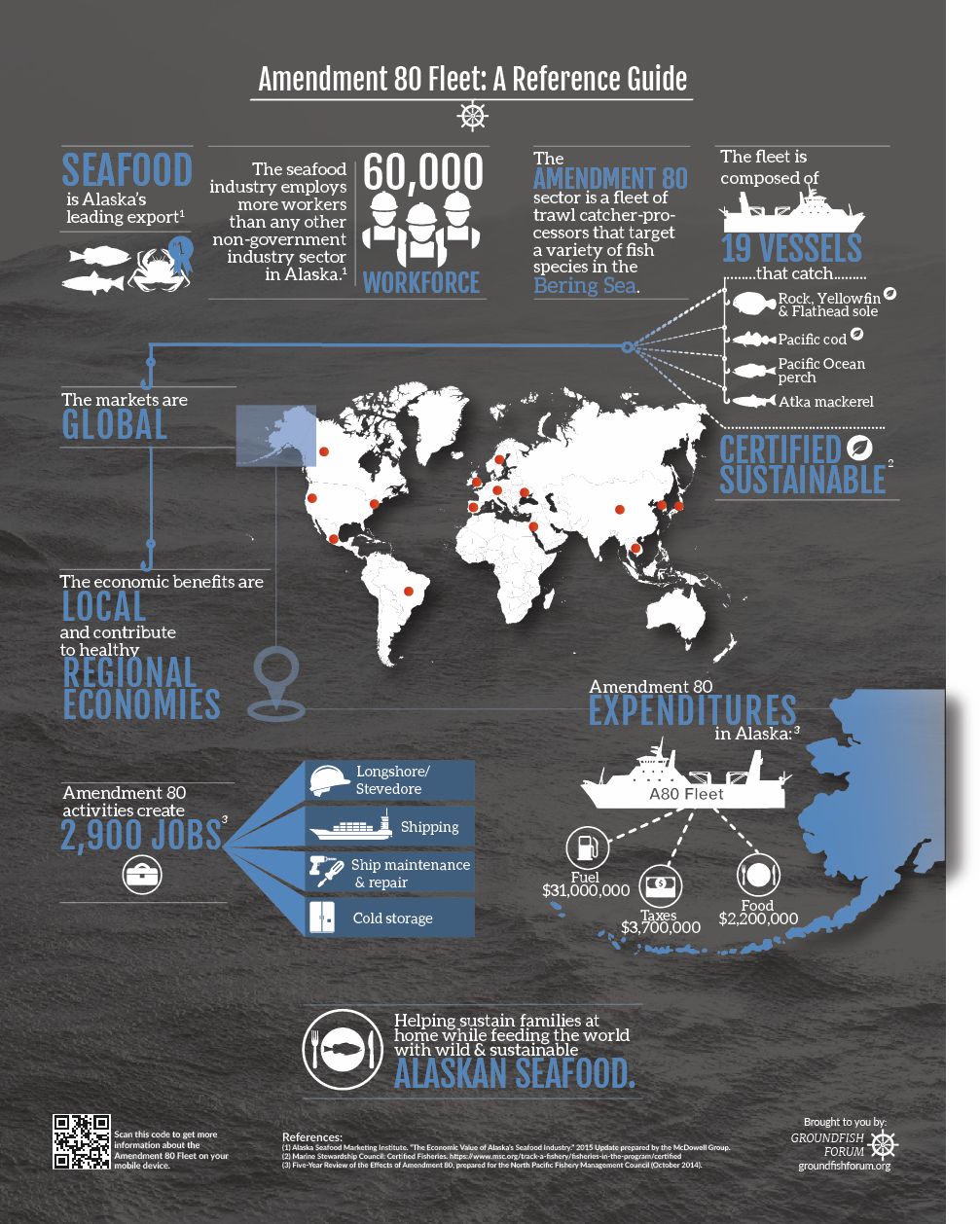By Peggy Parker, Seafoodnews.com, December 11, 2015 —
The North Pacific Fishery Management Council set 2016 pollock TACs at 1.341 million metric tons Thursday, up 30,643 metric tons from last year. Pollock TAC in the Aleutian Islands and Bogoslof area increased from 19,100 metric tons to 19,500 for 2016. This was less than the pollock increase of 64,000 tons recommended by the Advisory Panel, which voted to recommend a 1.374 million ton quota.
Pacific Cod catch limits dropped by 1,320mt to 238,680mt in the Bering Sea, but rose by almost 3,000mt in the Aleutian Islands to 12,839mt.
Arrowtooth flounder and northern rock sole were down slightly from last year, but much higher than what the Council’s Advisory Panel recommended.
Final catch limit for arrowtooth flounder was 14,000mt, down from last year’s 22,000mt. This year’s actual catch was 11,005mt. The AP had recommended 2,000mt for arrowtooth, and took into consideration a desire to lower halibut bycatch. Yellowfin sole, arrowtooth founder, and rock sole are among the top fisheries that catch the most halibut bycatch.
For northern rock sole, the AP recommended 35,000mt compared to last year’s 69,250mt. The Council set the TAC at 57,100mt.
Flathead sole was set at 21,000mt, slightly under last year’s TAC of 24,250mt. Actual catch last year was 11,139mt.
The Council’s decisions are constrained by a statutory cap of 2 million metric tons out of the Bering Sea. So even though the fishable biomass of pollock is over 7 million metric tons, and the TAC could be higher, it must fit within a total ceiling for all groundfish of 2 million metric tons.
“The two million metric ton cap has been a very good umbrella for us to stay under,” said Craig Cross, the Council member who made the motion. “During the times we were in an Olympic fishery, it has helped to keep us from overharvesting. It’s been a good thing.
“I do believe that as this TAC sheet has become more utilized, more studies have gone on, and we learn more, that we should look at ways that we can better utilize that two million ton cap,” Cross said.
The traditional process of setting TACs at the NPFMC is for industry sectors to negotiate an agreed to level for each of 22 species in up to four areas. For Atka mackerel, for instance, there are TACs for the Bering Sea/Aleutian Islands, Eastern Aleutians/Bering Sea, Central Aleutians, and Western Aleutians. Once the industry agrees, a single page is provided the Council for consideration.
This year the industry was too far apart to settle. The Advisory Panel recommendations on pollock were close to those of the pollock industry, but the Groundfish Forum, representing the flatfish fleet, suggested lower numbers on pollock and higher numbers on some of the flatfish. The Council’s resulting motion was much closer to the Groundfish forum version than the Advisory Panel’s recommendation. The At Sea Processors Association felt the higher pollock number was fully justified by the healthy state of the stock.
Two Council members asked Cross why his numbers did not reflect concern about halibut bycatch. NOAA Fisheries Regional Administrator Dr. Jim Balsiger asked him directly, “Why wouldn’t we want to take into account the halibut bycatch?”
Cross responded, “I think we do take into account all the bycatch, but not just halibut. I’d like to keep the TAC setting with what we’ve always done which is to take into account not only halibut, but crab and other species; we also have to take into account herring.”
Following the unanimous vote to accept Cross’ TAC levels, Council Member Duncan Fields moved for the Council to “continue to take into consideration groundfish species halibut bycatch rates, the potential effects of groundfish harvest on directed halibut fisheries, and the health of the halibut resource.”
Field’s said it was important to recognize a “shared responsibility with the IPHC to maintain the viability of halibut commercial, sport, and personal use fisheries, and the communities dependent on them.”
